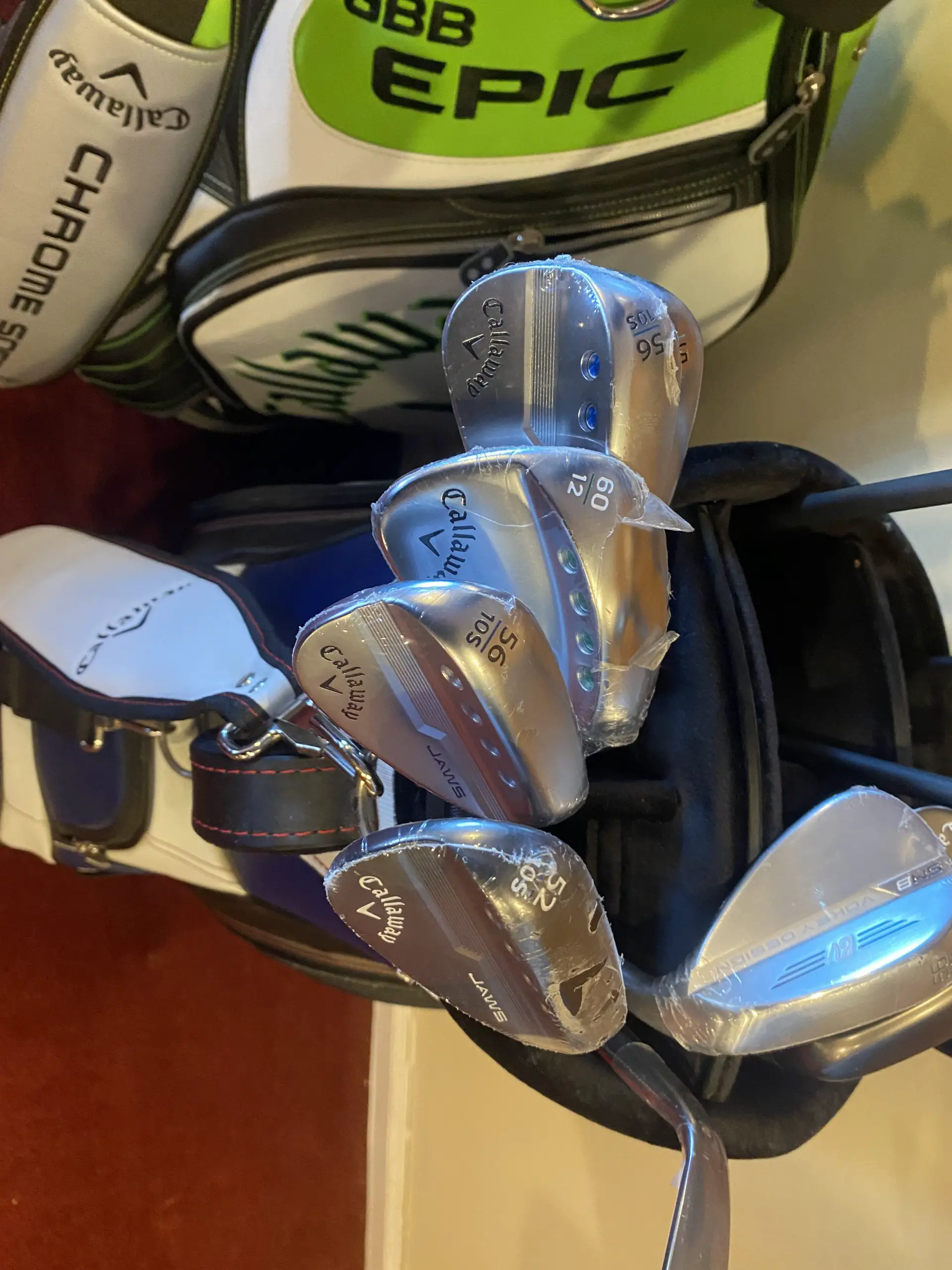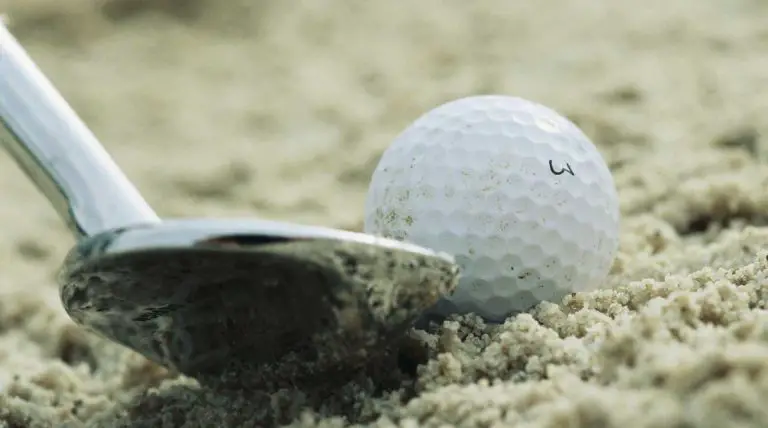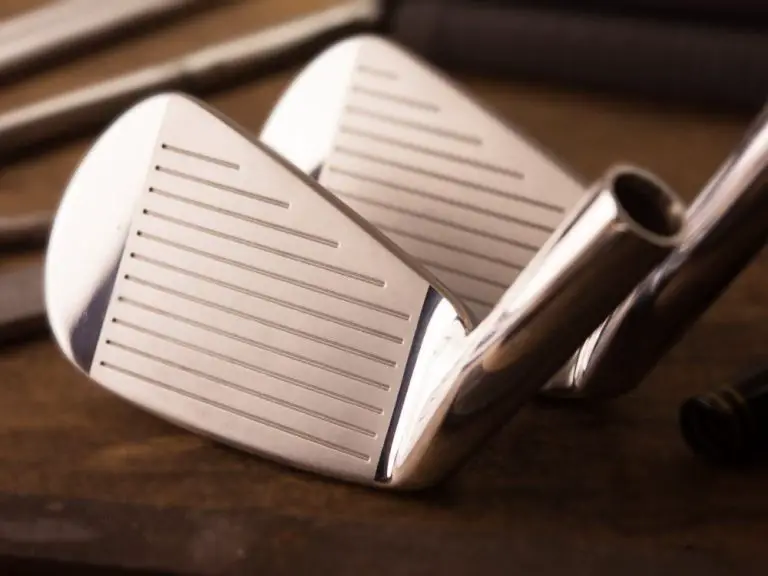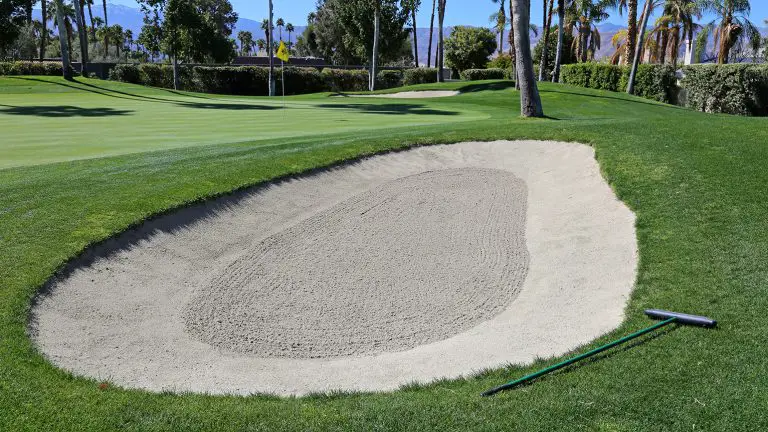What Is The Difference Between Mens And Womens Golf Clubs

Golf, often regarded as a game of precision and skill, requires not only talent and technique but also the right equipment. Among the essential tools in a golfer’s arsenal are the golf clubs, and interestingly, there are distinct differences between clubs designed for men and women. Understanding these disparities is vital for golfers looking to maximize their performance on the course and make informed choices when it comes to selecting the appropriate clubs.
When it comes to men’s and women’s golf clubs, several factors contribute to their dissimilarity. The length and weight of the clubs play a significant role, with men’s clubs typically being longer and heavier compared to women’s. The shaft flexibility and material also vary, with stiffer shafts and different materials commonly found in men’s clubs. Additionally, clubhead design, loft angles, grip size, and even the composition of the club sets differ between genders.
By delving into the differences between men’s and women’s golf clubs, golfers can gain valuable insights into how these variations impact their game. From swing mechanics and power generation to control and feel, each attribute of the club design has a purpose and an impact on performance. Whether it’s finding the right club length for optimal swing mechanics or selecting the appropriate grip size for comfort and control, understanding the nuances of men’s and women’s golf clubs is crucial for every golfer aiming to excel on the fairways and greens.

Main Difference: Club Length and Weight
The first noticeable difference between men’s and women’s golf clubs is the length and weight of the clubs. Men’s clubs are typically longer and heavier compared to women’s clubs. The longer length of men’s clubs allows for a wider swing arc and potentially generates more power. On the other hand, women’s clubs are shorter and lighter, catering to the average physical attributes and swing characteristics of female golfers.
Club Length in Men’s Golf Clubs
Men’s golf clubs often have longer shafts to accommodate their typically taller stature and longer arm reach. The extra length enables men to generate more clubhead speed and potentially achieve greater distances with their shots. Longer clubs also provide a larger sweet spot, increasing forgiveness on off-center hits.
Club Length in Women’s Golf Clubs
In contrast, women’s golf clubs feature shorter shafts to suit their generally shorter height and arm length. The shorter shafts allow women golfers to maintain control and accuracy in their swings. By using clubs with appropriate lengths, women can achieve proper body mechanics and strike the ball consistently.
Importance of Club Length for Swing Mechanics
Choosing the right club length is crucial for both men and women golfers. Using clubs that are too long or too short can lead to swing flaws and inconsistency. It is recommended for golfers to get custom-fitted clubs or consult with a professional club fitter to determine the optimal club length based on their height, arm length, and swing dynamics.
Club Weight in Men’s Golf Clubs
Men’s golf clubs are generally heavier compared to women’s clubs. The added weight contributes to increased power generation, especially for golfers with higher swing speeds and greater strength. The additional weight can help male golfers achieve a more controlled swing and potentially greater distances.
Club Weight in Women’s Golf Clubs
Conversely, women’s golf clubs are designed to be lighter, allowing female golfers to swing with less effort and generate sufficient clubhead speed. Lighter clubs enhance the ability to maintain control, especially for golfers with slower swing speeds. The reduced weight also assists in promoting better tempo and rhythm in women’s swings.
Impact of Club Weight on Swing Speed and Control
The weight of golf clubs plays a significant role in swing mechanics and overall performance. While men benefit from the added weight for power and control, women can leverage the lighter clubs for improved swing speed and maneuverability. It is essential for golfers of both genders to find the right balance between club weight and swing mechanics to optimize their game.
Shaft Flexibility and Material
Another vital aspect that sets men’s and women’s golf clubs apart is the flexibility and material of the club shafts. The shaft’s flexibility influences the club’s response during the swing, while the material affects its overall feel and performance characteristics.
Shaft Flexibility in Men’s Golf Clubs
Men’s golf clubs often feature stiffer shafts compared to women’s clubs. Stiffer shafts provide less flex and torsion during the swing, catering to the typically faster swing speeds and stronger swings of male golfers. The reduced flex contributes to increased accuracy and control for experienced players.
Shaft Flexibility in Women’s Golf Clubs
Conversely, women’s golf clubs tend to have more flexible shafts to accommodate their slower swing speeds and smoother tempo. The increased flex in the shaft allows for a better transfer of energy, helping female golfers generate sufficient power and achieve desired distances. The added flex also promotes a more comfortable swing feel.
Impact of Shaft Flexibility on Swing Mechanics
Choosing the appropriate shaft flexibility is crucial for golfers, as it directly affects swing mechanics and shot outcomes. For men, stiffer shafts provide better control and precision, especially for those with higher swing speeds. Women, on the other hand, benefit from the increased flexibility, which aids in generating more clubhead speed and achieving optimal launch conditions.
Shaft Material in Men’s Golf Clubs
The material used for the shaft construction also differs between men’s and women’s golf clubs. Men’s clubs often feature shafts made of steel or graphite, with steel shafts being more prevalent in irons and wedges. Steel shafts offer a solid feel, increased control, and are generally preferred by experienced male golfers. Graphite shafts, on the other hand, are popular in drivers and fairway woods, as they provide enhanced distance and improved vibration dampening.
Shaft Material in Women’s Golf Clubs
In women’s golf clubs, graphite shafts are more commonly found across the entire set. Graphite shafts are lighter and offer increased swing speed for female golfers. The lighter weight helps women generate more clubhead speed, ensuring sufficient power and distance while maintaining control. Graphite shafts also provide a softer feel, reducing the impact vibrations and enhancing overall comfort during the swing.
Influence of Shaft Material on Swing Feel and Distance
The choice between steel and graphite shafts, as well as their flex characteristics, significantly impacts the overall feel and performance of the golf club. Steel shafts provide a more solid feel and greater control, suitable for male golfers seeking precision. Graphite shafts, particularly for women, offer lighter weight, improved swing speed, and a softer feel, contributing to enhanced distance and comfort.
| Club Component | Men’s Golf Clubs | Women’s Golf Clubs |
|---|---|---|
| Club Length | Longer | Shorter |
| Club Weight | Heavier | Lighter |
| Shaft Flexibility | Stiffer | More Flexible |
| Shaft Material | Steel or Graphite | Graphite |
Clubhead Design and Loft
The design of the clubhead and its loft angle are crucial factors that differentiate men’s and women’s golf clubs. The clubhead design influences forgiveness, playability, and shot trajectory, while the loft angle determines the ball’s launch angle and flight characteristics.
Clubhead Design in Men’s Golf Clubs
Men’s golf clubs often feature a slightly larger clubhead size compared to women’s clubs. The larger clubhead provides a larger sweet spot, offering more forgiveness on off-center hits. Additionally, men’s clubheads may have a more aggressive design with a lower center of gravity, promoting a higher launch and lower spin for optimal distance and control.
Clubhead Design in Women’s Golf Clubs
Women’s golf clubs typically have slightly smaller clubheads compared to men’s clubs. The smaller clubhead size allows for better maneuverability and control, catering to the swing characteristics of female golfers. The clubhead design in women’s clubs may focus on a higher center of gravity to assist in achieving an optimal launch angle and carry distance.
Different Loft Angles for Men’s and Women’s Clubs
The loft angle of the clubface also varies between men’s and women’s golf clubs. In general, women’s clubs tend to have higher loft angles compared to their male counterparts. The higher loft helps women golfers achieve the desired ball flight and maximize carry distance. Men’s clubs, on the other hand, often have slightly lower loft angles to optimize launch conditions for their swing speeds.
Effects of Clubhead Design and Loft on Ball Flight
The clubhead design and loft directly influence the ball’s launch angle, spin rate, and overall flight characteristics. For men, a larger clubhead with a lower center of gravity promotes a lower spin and a more penetrating ball flight, suitable for maximizing distance and control. Women’s clubs, with their smaller clubheads and higher loft angles, promote a higher launch, increased carry distance, and improved accuracy.
Adjusting Loft for Maximum Distance and Control
It is important for golfers, both men and women, to understand the loft angles of their clubs and how they impact their game. Optimizing loft can help achieve the desired ball flight and maximize both distance and control. Golfers should consider working with a professional club fitter or utilizing adjustable loft technologies to fine-tune their club’s loft for optimal performance.
Grip Size and Texture
The grip of a golf club plays a crucial role in the golfer’s comfort, control, and overall feel during the swing. Grip size and texture vary between men’s and women’s golf clubs to accommodate differences in hand size, strength, and personal preferences.
Grip Size in Men’s Golf Clubs
Men’s golf clubs typically come with larger grip sizes compared to women’s clubs. The larger grip size is designed to accommodate the average hand size and grip strength of male golfers. A proper grip size ensures a secure hold on the club, reducing the likelihood of grip pressure-related swing faults and promoting consistent shotmaking.
Grip Size in Women’s Golf Clubs
Women’s golf clubs, in contrast, feature smaller grip sizes to accommodate the generally smaller hand sizes and grip strength of female golfers. A smaller grip allows women to have better control over the club throughout the swing. Using a grip that matches their hand size enables women to maintain a relaxed and consistent grip pressure, leading to improved swing mechanics and shot accuracy.
Importance of Proper Grip Size for Comfort and Control
Using the correct grip size is crucial for golfers of all levels. An ill-fitting grip can lead to grip tension, loss of control, and inconsistent ball striking. Golfers should consider getting their grip size professionally measured or experimenting with different grip sizes to find the most comfortable and secure hold on the club.
Grip Texture in Men’s Golf Clubs
The texture of the grip surface also differs between men’s and women’s golf clubs. Men’s grips often have a more aggressive texture, providing a firm and secure feel. The textured surface enhances grip stability and control, especially in wet or sweaty conditions, allowing male golfers to maintain a confident hold on the club.
Grip Texture in Women’s Golf Clubs
Women’s golf clubs may feature grips with a softer and smoother texture. The softer texture provides a comfortable and tacky feel, promoting a relaxed grip and preventing slippage during the swing. Women’s grips often prioritize comfort and feel, allowing for a more natural connection between the golfer’s hands and the club.
| Club Component | Men’s Golf Clubs | Women’s Golf Clubs |
|---|---|---|
| Club Length | Longer | Shorter |
| Club Weight | Heavier | Lighter |
| Shaft Flexibility | Stiffer | More Flexible |
| Shaft Material | Steel or Graphite | Graphite |
| Clubhead Design | Larger, lower center of gravity | Smaller, higher center of gravity |
| Loft Angle | Slightly lower | Slightly higher |
| Grip Size | Larger | Smaller |
| Grip Texture | Aggressive | Softer and smoother |
Club Set Composition and Availability
The composition of a golf club set refers to the specific clubs included and their respective numbers. While there are standard club set compositions for men and women, customization options are available to cater to individual preferences and playing styles.
Standard Club Set Composition for Men
Men’s golf club sets typically consist of a driver, fairway woods, irons (from long irons to short irons), wedges (pitching wedge, sand wedge), and a putter. The exact number of clubs may vary, but the standard set composition ensures coverage for various distances and shot requirements on the course.
Standard Club Set Composition for Women
Women’s golf club sets generally follow a similar composition to men’s sets. However, women’s sets may feature more hybrid clubs or utility clubs to accommodate their swing characteristics and provide easier launch and forgiveness. The inclusion of higher lofted fairway woods and additional hybrids ensures optimal distance coverage and playability for female golfers.
Availability of Customization Options
Both men and women golfers have the opportunity to customize their club sets to suit their individual preferences and performance goals. Customization options may include adjusting the shaft flex, grip type, and even clubhead design to optimize performance and enhance overall comfort. Golfers should consult with professional club fitters or retailers specializing in custom fittings to explore the available customization options.
Understanding the Needs of Male and Female Golfers
When selecting golf clubs, it is crucial to understand that the needs and requirements of male and female golfers can vary. Factors such as swing speed, strength, and playing style influence the club selection process. It is essential to consider individual attributes and preferences to ensure the right combination of clubs that maximize performance and enjoyment on the course.
Tailoring Club Sets for Optimal Performance
Tailoring a club set to an individual’s game can greatly impact their performance. For example, male golfers with higher swing speeds may benefit from incorporating lower lofted fairway woods and extra wedges for greater shot versatility. Female golfers, with their typically slower swing speeds, may benefit from higher lofted fairway woods and additional hybrids for easier launch and increased distance coverage. Customizing club sets allows golfers to optimize their equipment to match their specific needs and improve their overall game.
Additional Considerations
Beyond the key differences between men’s and women’s golf clubs, there are several other factors to consider when selecting the right equipment.
Swing Speed and Strength Differences
Men generally exhibit higher swing speeds and greater physical strength compared to women. These differences can impact the equipment choices. Men may benefit from clubs designed to handle higher swing speeds and provide the necessary control and power. Women, with typically slower swing speeds, may benefit from clubs designed to help maximize distance and forgiveness.
Skill Level and Playing Style Variations
Skill level and playing style also play a role in selecting golf clubs. Experienced golfers may prefer clubs with more specific characteristics tailored to their playing style. Beginners or high-handicap golfers may benefit from clubs that offer forgiveness and ease of use to assist in improving their game.
Importance of Club Fitting for Both Genders
Regardless of gender, club fitting is essential to ensure the optimal fit and performance of golf clubs. Professional club fitting takes into account individual attributes such as height, swing mechanics, and personal preferences. A proper club fitting can help identify the ideal club specifications, including shaft length, flex, grip size, and clubhead design, to enhance performance and maximize the golfer’s potential.
Considering Individual Preferences and Performance Goals
Ultimately, the choice of golf clubs should align with the individual golfer’s preferences and performance goals. While there are general differences between men’s and women’s golf clubs, personal preferences, swing characteristics, and playing goals should guide the club selection process. Trying out different clubs, seeking professional advice, and considering feedback from trusted sources can help golfers make informed decisions.
Conclusion
Understanding the differences between men’s and women’s golf clubs is essential for golfers aiming to optimize their performance on the course. The variations in club length, weight, shaft flexibility, clubhead design, grip size, and set composition cater to the specific needs and characteristics of male and female golfers. By selecting the right equipment that matches their physical attributes, swing dynamics, and personal preferences, golfers can enhance their comfort, control, and overall enjoyment of the game. Whether it’s through off-the-shelf options or custom fittings, finding the perfect golf clubs can make a significant difference in one’s golfing journey. Remember, golf is a game of precision and skill, and having the right tools in hand sets the foundation for success on the fairways and greens.





